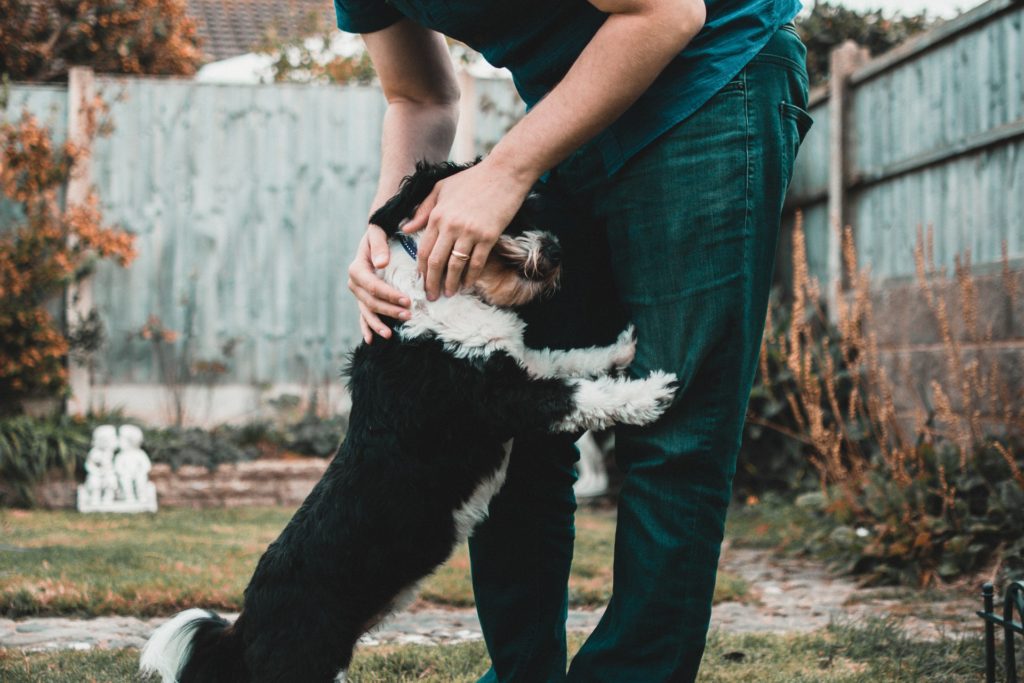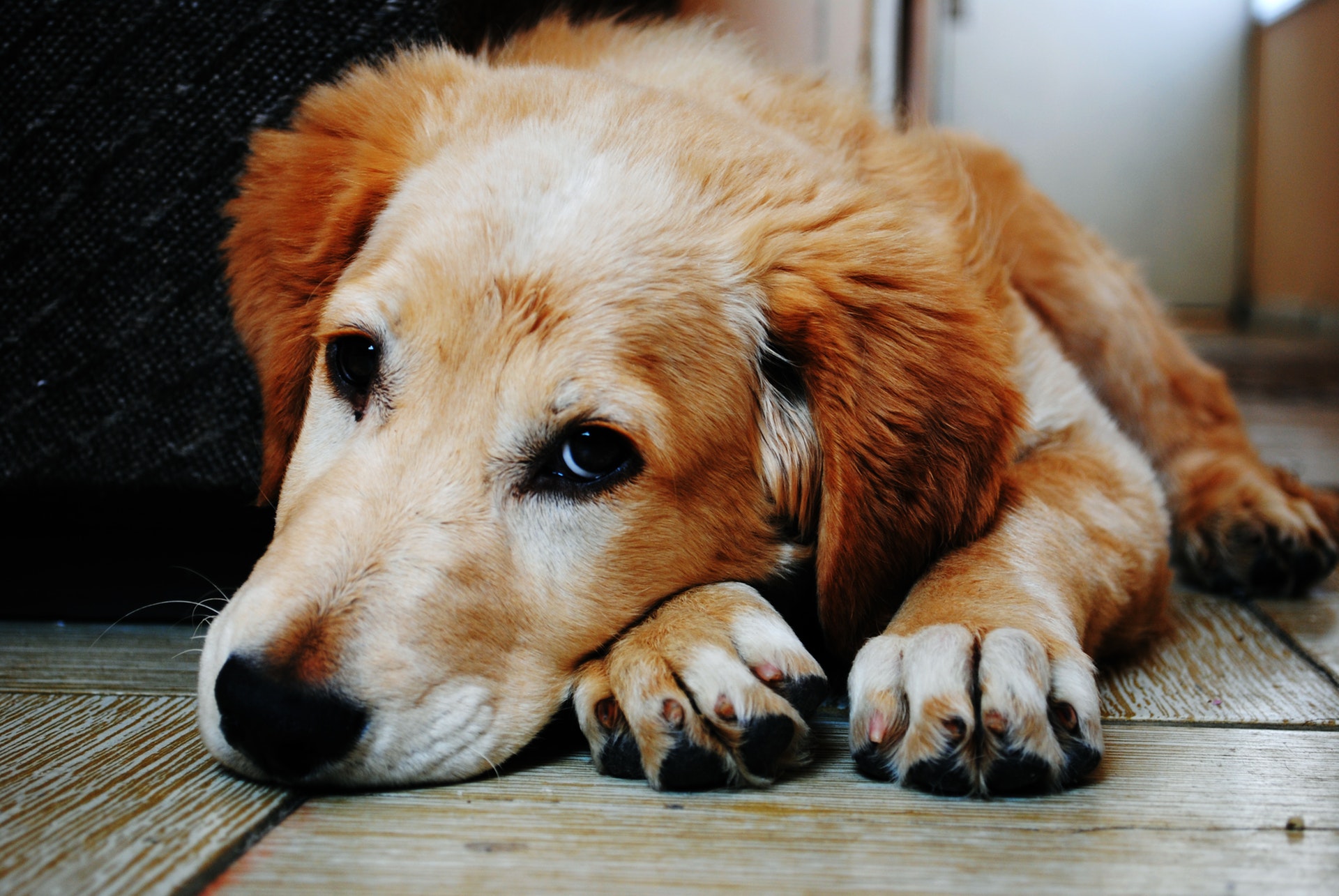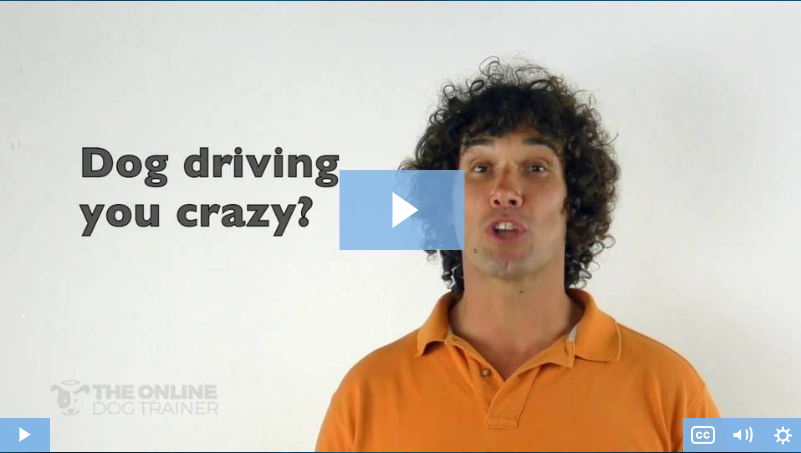Understanding how to calm a dog with separation anxiety can be a very complicated topic.
Of all the many aspects of canine training and calming, this is certainly one of those whereby what works in one case may have no effect in another.
But of course, there’s never any excuse to give up as even the most difficult dogs who have never been used to being left alone can learn how to adapt.
It just takes plenty of time, patience, and a very “softly-softly” approach to get there.
So in this post, we’ll examine what causes dogs to suffer from separation anxiety and explain some tried and tested techniques to help alleviate the problem.
WATCH VIDEO: Discover How To Finally Calm Your Dog’s Anxiety Using 5 Simple Exercises That Take Minutes A Day To Apply!
(video will open in a new window)
What Is Separation Anxiety?
Just like humans, dogs are highly social creatures who, over thousands of years, have evolved to work and live with us.
Chances are you will have heard your role, as the ‘owner’, being described as the ‘pack leader’.
And that is exactly how your dog perceives its living arrangements.
Consequently, our canine buddies always want to stick together and can become highly stressed if left alone.
So dogs susceptible to this (and a majority are) can often feel abandonment anxiety.
Try to think about it from your dogs’ point of view…
Not only do they not know where their pack has gone, but even worse they are trapped in an enclosed environment and unable to head out to find them.
What happens next depends entirely upon the individual dog.
Some breeds are generally a little better left on their own (e.g Terriers) while others are driven slowly insane (e.g greyhounds).
But remember that there is no certainty either way, and you certainly shouldn’t choose a pet based upon this assumption.
Dogs who are susceptible to separation anxiety will most likely perform/displayed a combination of these actions while left alone.
These can include…
- Barking/howling often constantly all day. This can lead to long term vocal harm.
- Defecating at random and sometimes also coprophagia (consumption of own excrement).
- Damage interior property of all descriptions (furniture, curtains, anything destroyable). Often this will be specific items that carry your scent – clothing, and shoes being particularly at risk.
- Leave treats left out untouched yet have drunk their water completely.
- Have made attempts to escape by clawing at doors and windows.
- Be waiting at the window for your return.
So when you get home, rather than a happy dog delighted to see you, you will find a panicked best buddy who will likely lose trust and respect for you the longer the situation repeats itself.
Many owners who come home to a trashed house make the terrible mistake of shouting at their dog for the damage and mess which they have caused.
From the dogs perspective, they simply have no idea what is going on and this will make it grow worse and worse every time it happens.
Contrary to long outdated opinion dogs do not just ‘get used’ to being left alone for long parts of the day.
Instead, they need to be coached towards understanding that it’s OK to be left alone and that eventually, you will come back.
Never forget that dogs are creatures of habit.
They thrive by routine, and so when the weekend rolls around and you spend two days together they will consider that everything is back to normal.
Only to be disappointed when Monday rolls around and they’re left for another five days of feeling ‘abandoned’.
Left unchecked this will seriously damage your relationship with your dog, quite possibly beyond repair.

Why Do Dogs Get Separation Anxiety?
As mentioned above dogs are inherently used to living as a pack, and are acutely prone to feeling abandonment issues when left alone.
Some people assume that by raising a single puppy that they will not feel so attached, but unfortunately that is far from the case!
Their family is their pack, and that now means you.
So even though some dogs are naturally more adaptable to being left alone than others. There are a number of scenarios where they may become more likely to develop into a problem.
Some examples would be…
- A sudden change to routine/circumstances leading to a dog who was rarely/never left alone for long periods now being cooped up alone for several hours per day.
- Fear over where their next meal is coming from. Dogs who are used to set meal times are liable to panic when there is nobody there to look after this. For this reason, people who live alone and work irregular shift patterns are likely going to come home to a very stressed out dog indeed.
- They can smell you but cannot find you. Dogs left alone indoors are surrounded by the familiar scents associated with their distant pack-mates. This serves to accentuate the stress and anxiety even further.
- Unexpected noises (postal worker knocking on the door is a classic example) are liable to make them even more panicked as they fear they will have to defend their den alone.
There is an enormous number of potential reasons why some dogs will suffer separation anxiety and it is important to also remember that it can also develop later in life.
Say for example you had two dogs who were happy to keep themselves company while the rest of the family went about their daily business.
Should one pass, then suddenly the survivor is going to be facing an entirely unexpected situation that they have no preparation for.
It can even be perceived to be a punishment and add even more confusion.
Related: 5 Step-By-Step Exercises To Quickly Calm An Anxious Dog

How To Calm A Dog With Separation Anxiety
Remember at the top of this article that it was warned that this was a difficult topic!
Hopefully, by now, you will see how many potential variables there are when trying to devise ‘catch-all’ solutions to this most common of problems.
While separation anxiety is perhaps the easiest and most apparent canine behavioral problem to diagnose, it can also be one of the trickiest to resolve.
What follows is an assortment of techniques that have a good success rate when employed alone, but even better when used in combination.
Select those which you feel are most appropriate to your circumstances and above all else remember the two golden rules.
Stay calm and always be consistent.
#1 – Start Short – The Golden Rule
If you bring home a dog on a Sunday evening and then spend most of the following day away, expect to come home to a very distressed pooch.
In order to effectively train a dog to be comfortable left alone, it is important to start with short intervals and work up from there.
It needn’t take forever, once you crack the one hour mark then double up to two, then four, six and eight (more than that is going to be difficult!).
But don’t attempt that over a week – plan it ideally for at least a couple of months and expect mistakes.
The objective with this technique is to help your dog associate being left alone not as a worry, but instead as an opportunity.
They have the house/area (see below) all to themselves to play with their toys, doze at leisure and ideally have sweet dreams of their owner’s return home.
Sounds idyllic? It is possible!
#2 – Establish & Isolate An Area
Consider installing a stair gate or child gate.
The idea behind this is to determine an area where your dog (and you) feel comfortable to keep them when left alone.
Make it as comfortable as possible with toys, bedding and water and leave them in there while you are elsewhere in the house, ideally after a good walk or exercise session.
Confused as they may be to start with, they will know that they are not alone in the house and will settle down to their own devices.
In an ideal scenario, this should be employed overnight as well so they become even more familiar with being alone for long periods.
Try to avoid shutting them inside one place though.
Gates are great because while they provide some restriction they allow noise and scents to continue to waft around the house and prevent claustrophobia.
Consider also leaving on the radio – talk stations are better than music – so that they become familiar to consistent background noise.
Further down the line, the objective will be to have a dog who will understand and obey the command “Bed” and not feel remotely stressed at the prospect.
#3 – Leaving The House
Related to point #1, the idea here is to get the dog used to what it means to leave the house.
Ever noticed how excited they get when they see the leash?
Walkies time!
Look instead for a different prompt – it could be as simple as an alternative jacket, briefcase/satchel, shoes – that will instead imply that you are heading out alone.
Your dog will pick up on these prompts sooner than you’d believe but always stick to them in order to avoid confusion.
When leaving the house try and follow this system…
- Prepare their area as you would normally and prepare to leave.
- Head out and stroll around the block. Return within a few minutes before your dog gets stressed.
- Repeat this six times over the day to establish a sense of routine.
- Increase the duration very gradually. If there are signs of distress then head back a little.
- Every time you come home keep greetings very casual – to the verge of dismissive. This will hopefully reduce their sense of dependency.
- When your dog has had an ‘accident’ do not get angry. Just roll back a few steps and continue again.
- When training to be left for several hours or longer it may be a sensible idea to perform toilet training. Adult dogs can hold it in a surprisingly long while but not forever.
Related: 5 Step-By-Step Exercises To Quickly Calm An Anxious Dog

Alternative Options & Considerations
Dogs who exhibit only slight signs of separation anxiety may be able to be successfully crated assuming you can convince them that it is a den/safe spot.
Those who have more severe symptoms will likely not take to this well and can become extremely stressed even during short phases of absence.
So it really depends on the dog and should not be a decision taken lightly when less restraining solutions may still be an option.
Remember that your dog is going to likely get bored over their isolation as well as crave company.
Even when they can handle a few hours alone, it is important to provide plenty of distractions. Puzzle toys are a great way of keeping them busy.
Whichever solutions you opt for, just remember that when you get home to be sure to make your dog the #1 priority.
They will be delighted to see you, hold back on reciprocating the immediate greeting beyond a gentle pat until they have calmed down. Then take them out to exercise and burn off some pent up energy.
Medications
And last but not necessarily least there are medications that serve as very soft sedatives available from your local veterinarians.
While by no means should these be considered a ‘solution’ they can be useful in certain circumstances where there simply is no other alternative.
Before heading down that path, check out your local options for professional classes focusing upon anxiety and isolation.
Separation anxiety is a common problem and there’s a good chance they will be able to help without recourse to medication.
Final Thoughts
While there is no absolute formula for solving separation anxiety there is at least a clearly defined pathway to eventual success.
Getting this right takes time and a lot of patience, and it is never a bad idea to consider seeing if a neighbor may be willing to drop by and feed/walk your pet during any prolonged period of regular absence.
Should you be lucky enough to have the perfect candidate, just be sure to introduce your dog to them a few times beforehand so they understand that they can be fully trusted.
The only real solution to the problem is to slowly and with as little trauma as possible desensitize your dog away from separation anxiety.
Being able to do so is a massive achievement and no matter how frustrating it can be, you can and will get there with enough perseverance.
Best of luck!
Do you have any comments or suggestions to add concerning your experience with canine separation anxiety? Feel free to add them in the comments below…

